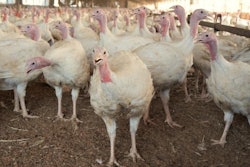
Global egg consumption is increasing as consumers continue to find importance in eating nutrient dense foods and as eggs are recognized for their price point and versatility. Additionally, supply chain issues and disease outbreaks, such as highly pathogenic avian influenza (HPAI) and African Swine Fever (ASF), in many areas of the world have increased the price of other protein options, making eggs more desirable.
U.S. egg consumption
The demand for eggs has grown in the U.S. over the last decade and continues to trend upwards. In 2021, U.S. consumption was estimated at 280.5 eggs per capita, with projections for 2022 and 2023 estimated at 279.9 and 292.7, respectively (Table 1).
The U.S. Department of Agriculture (USDA) projects that the U.S. will export 217 million dozen eggs in 2022 and 265 million dozen eggs in 2023, a drop of 44% and 32% from 2021’s export value of 392.2 million dozen eggs. The decrease is mostly due to the number of laying hens lost to HPAI in 2022.
By 2031, the USDA projects that U.S. citizens will be consuming 310.5 eggs per capita, an increase of over 7% from 2022 (Figure 1). U.S. egg consumption will reach almost 9.2 million dozen by 2031, an increase of 13% from 7.9 million dozen in 2022 (Figure 2).
U.S. retail egg prices are projected to increase significantly by the end of 2022, due to supply chain issues, operational price increases and HPAI. The USDA believes that egg prices will grow to US$2.12 per dozen in 2022, their highest level in four years and similar to the prices seen during the 2015 HPAI outbreak (Table 2). However, by the third quarter of 2023, prices are projected to drop to US$1.51.
Egg consumption varies regionally
A greater awareness of the health benefits of an increase in protein consumption, as well as rising incomes and improving productivity levels, are helping drive egg consumption globally.
In the European Union, egg consumption is estimated at 6.2 million metric tons (mmt) in 2022 and is projected to grow to 6.4 mmt by 2031, according to data from the European Commission (Figure 3).
When looking at per capita consumption in 2019, China documented the largest value at 20.77 kg due to its size and economic development, according to data from the FAO. (Figure 4). Mexico was the second country with the most egg consumption 20.33 kg per capita in 2019, as protein affordability remains important to the region.
Japan’s per capita consumption came to 19.93 kg in 2019, due to improvements in production efficiency, followed closely by the Netherlands at 19.89 kg per capita. Ukraine’s consumption was reported at 18.69 kg in 2019 due to significant increases in egg production.
Per capita egg consumption in Albania 2010-19
Per capita egg consumption in Canada 2010-19
Per capita egg consumption in France 2010-19
Per capita egg consumption in Spain 2010-19
Per capita egg consumption in Kuwait 2010-19
Per capita egg consumption in Lithuania 2010-19
Per capita egg consumption in Argentina 2010-19
Per capita egg consumption in Columbia 2010-19


















